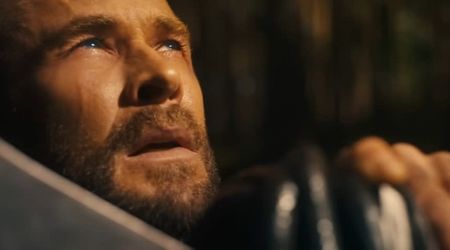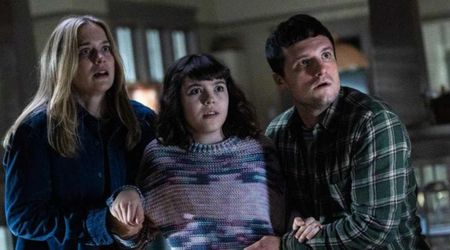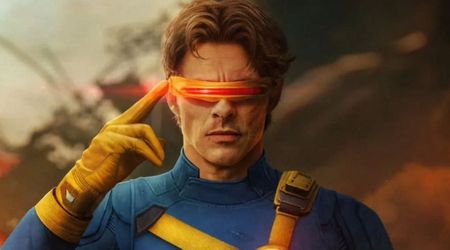'Yusuf Hawkins: Storm Over Brooklyn': How the death of a Black teen shed light on New York's racism problem

The death of George Floyd, an African-American man at the hands of a white police officer in May, sparked one of the biggest revolutions of the decade. Over 60 days later, the widespread national demonstrations demanding justice for Floyd and other fallen Black lives continue. Alongside this, the Black Lives Matter matter regained momentum accompanying the protests with its cause to attain equality and end systemic racism. These progressive winds of change sweeping the nation have not only called to attention the most pressing matters concerning the Black community, but they have also shed light on the centuries of oppression and injustice that they have been subjected to.
Innumerable African-Americans have perished at the hands of racial violence and police brutality, and HBO is drawing focus to a young boy who was tragically killed as a result of racist tactics. 'Yusuf Hawkins: Storm over Brooklyn' is a documentary by Muta’Ali about the murder of Yusuf Hawkins, an unarmed black teenager. Yusuf Hawkins, 16, hailed from Bedford-Stuyvesant, Brooklyn, East New York.
On August 23, 1989, he accompanied his three friends to Bensonhurst, a conservative and predominantly Italian-American working-class neighborhood in New York City to look at a used Pontiac that one of his friends was planning on purchasing. Upon exiting the 20th Avenue train station, the group of teenagers was faced with an angry White mob who had been standing guard and on the lookout for Black and Hispanic youths rumored to be dating a White girl in the neighborhood, as per NYT. The group of White men comprised some 10 to 30 youths, with at least seven of them brandishing baseball bats, while one was armed with a gun. It was a case of mistaken identity and the mob thought that Hawkins and his friends had been there for a fight. The confrontation ended with the armed young man fatally shooting Hawkins in the chest, twice. He died at Maimonides Medical Center, soon after.

Police Commissioner Benjamin Ward spoke of the incident, per a 1989 New York Daily News Report, and said that Hawkins and his friends "were completely innocent", and had been "mistaken for another group of youths." He believed that one of the whites from the mob was the girl's ex-boyfriend, "a spurned lover," but other sources reported that the attack was more racially charged than romantic. Hawkins had been the third man slain by white mobs in 1980s NYC, the two other victims being Willie Turks (died: June 22, 1982) and Michael Griffith (died: December 20, 1986). The incident uncorked a flood of racial tensions that had been prevalent in NYC but came to the forefront in the ensuing days and weeks. It culminated with a series of emotionally charged marches and protests through the neighborhood, led by Reverend Al Sharpton. Upon learning of his son's demise, Hawkin's father, Moses Stewart, had approached Sharpton intending to seek justice.
With Sharpton's involvement, the case garnered national recognition. He had previously gained prominence after his activism in the 1984 Bernhard Goetz case when a white man shot four Black teenagers on a NY subway and was acquitted of all but firearms charges. He also led the protests for Griffith, who had been chased to his death across a highway in Queens, NY by a white mob in 1986. In addition to that, Sharpton was also renowned for his involvement in the Tawana Brawley case, when an African-American teenager from Wappingers Falls, New York, accused four White men of raping her. He led the protests, though Brawley's case was heavily discredited after a grand jury investigation. However, Sharpton had managed to gain a reputation for championing African-American rights and led the protests in Bensonhurst demanding justice for Hawkins.

Furthermore, Hawkins' untimely and unfair death highlighted the strained racial climate in New York at the time. It also assumed the central position in the then-impending Democratic mayoral primary. A New York Times report from 1989 said that the teenager's murder “galvanized civil rights leaders and helped undermine Mayor Edward I Koch’s bid for a fourth term. Weeks after the killing, the mayor was defeated in the Democratic primary by David N Dinkins, who went on to become the city’s first African-American mayor.” Following the protests, David Dinkins went on to become the first and as of far the only African-American mayor in the city's history. However, the racial tensions reached a fever pitch in 1991 in the Big Apple when Sharpton was stabbed amid a peaceful protest. Sharpton was also among those that spoke at George Floyd's funeral in June.
Eight people were charged in relation to Hawkins' murders, but two of them, namely Joseph Fama and Keith Mondello faced the harsher charges because they were believed to be the prime instigators of the crime. Fama was subsequently convicted of second-degree murder and sentenced to 32 years in prison in 1990. He will be eligible for parole in 2022. Mondello was acquitted of murder and manslaughter charges but was sentenced to five to 16 years in prison. He was released in 1998 after serving eight years. In 2014, Mondello told the New York Daily News that he would “do anything to give Yusuf Hawkins his life back.” He continued, "That kid was shot for no reason at all. It was completely senseless. Did I know that then? Yes. I know it even more now," and added, “This is not something for you to report to make people think that, ‘Oh, I’m some kind of good person.’ I mean it honestly from my heart."

Over the last 30 years since his death, Hawkins has been immortalized in several hip-hop songs including Tupac Shakur's 'Tearz of a Clown' and the poem he penned, titled 'For Mrs Hawkins'. Spike Lee's 1991 film 'Jungle Fever' was dedicated to Hawkins' memory. A mural in his likeness on the side of a building on Verona Place in Bed-Sty that had faded over time was restored in August 2011 by street artist Gabriel Specter.
‘Yusuf Hawkins: Storm over Brooklyn’ premieres August 12 at 9/8c on HBO and will be available to stream on-demand, on August 13.










